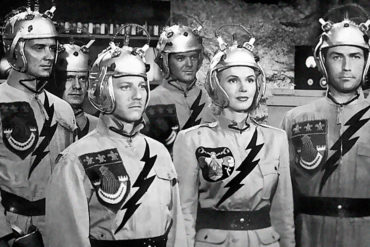Rachel Kann has asked me twice to write about what I was like in junior high. Since Rachel Kann suggests the best topics and she asked twice, I’m honoring her request.
In 7th grade, I wrote suicide notes and kept them in my desk drawer at home. I destroyed them as quickly as I wrote them. I wrote them often. And then I left them in my drawer for a night or two and then ripped them to pieces and threw the pieces deep into the garbage.
My middle school, we called it that instead of junior high, was an actual shit hole. I can accurately compare my experience in middle school to being locked in an outhouse. You could not have put a mezuza on the door to my middle school. The bathrooms stank, and the locker rooms stank, and the cafeteria stank, and most of all the people stank.
At age 13, I was serious and a good student, and a bit arrogant about my intelligence. I was not interested in boys, and boys were not interested in me. I was bad at sports because I could not catch or throw. The only sport I could play relatively well was field hockey, and that was because you only had to hit a ball with a stick in field hockey. No throwing or catching was involved. I was good at art, but not as good as Jon P. Jon P. was an artistic prodigy. Jon P. had the advantage of being socially skilled and good at sports. He left our school and went to a special art school out of state, which was a relief to me because I no longer had to compete with him. He was not competing with me, but I was competing with him. I was a good student, but not as good as Kristen D., who got straight A’s and who I envied because she was amazing at sports and got straight A’s. She had been my friend in elementary school, but she ascended to the cool crowd once it formed. And she deserved to be in the cool crowd: She was good at sports, and happy, and got straight A’s.
In 6th grade, I was still allowed to sit at the lunch table with my friends from elementary school, who were becoming cool and leaving me in the dust. But they still let me sit with them. We threw raisins at the boys who sat at the next table over. I always had a box of raisins because in 6th grade I started making my own lunch, by the ruling of my mom, and a box of raisins was easy to pack. Maybe they let me sit there because I had raisins and it was fun to throw raisins, and probably also because the cool crowds had yet to fully crystallize.
By seventh grade, the lunch table was a battleground. Where you sat determined your status, and the other girls would fight not to have to sit next to me. I ended up at the end of the table with the other hangers-on. On the one day when I got a seat in the middle of the table, Katie S., who hated me the most and who ruled the lunch table with an iron fist, spilled an entire cup of Slush Puppy across the table at me. That’s how she got me to leave. She also spat at me in the hall. It was a carpeted hall, so her spit sank into the carpet and didn’t hit me. But she spat at me. At a certain point in seventh grade, I finally left the lunch table and sat with a different group of girls, the group who was one tier above the losers.
There were five tiers on the social heirarchy in my middle school: the cool crowd who did the boy-girl thing and also was into drinking quite early; then the girls I was friends with in elementary school who became the sporty cool crowd who didn’t do the girl-boy thing and weren’t drinking yet; then the next tier down, which was girls who were nerdy but unaware of their nerdiness, which is who I joined; and then there was the two castes of losers — the ones who were well-groomed and the ones who smelled. If my middle school had been India, the losers would have been the Dalit. They were dirty, and fat, and weird, and nobody was ever allowed to partner with them when we’d get matched up in classes to do group projects. Having to partner up with a loser was like getting leprosy and being relegated to the brick kilns. I don’t mean to make light of the situation in India, which makes millions of people impoverished and ill. We were living in an affluent suburb, Marblehead, Massachusetts, and nobody had even heard of the brick kilns. Child labor, to us, was vacuuming our houses before Thanksgiving. I mean it in the sense of the rigidity of the social castes; and the cruelty inflicted on the lower castes from the higher castes. If you were a loser, you were staying a loser, and you had no chance of ever moving up. Losers were as good as dead.
At thirteen, I was more or less on the verge of becoming an untouchable loser, at least in my mind. I wore the same Gap T-shirts as everyone else wore, and I still wasn’t good enough. I was sure that if I died, my entire middle school would be happy. One less loser to threaten their stature! One less loser to want to sit at their table and partner with them on group projects! My loser-dom could no longer rub off on them. They would have danced in the streets, I thought. At school I wanted to die.
There were two places where I didn’t want to die when I was thirteen: Hebrew school, where I got to socialize with kids from other schools and where we had an odd kind of camaraderie because we all were forced to go; and ballet. Ballet was an alternate universe.
My family was, and still is, a warm but extremely eccentric clan. My family was reality. My family was loud and anxious and opinionated and fat. We were Jews with a capital J. We were Democrats. We composted and recycled. On cultural food day at school, my mom sent me with a kugel, which nobody — nobody — would try. Everyone ate the Irish kid’s apple pie. The WASPs got to bring brownies.
My family was reality. My family has a strong moral compass, which didn’t do me any favors socially. My family collects stuff. Our house was always messy, not because we were dirty people but because there was so much stuff in it. My family was anxious about me becoming an alcoholic or a burnout or a bad student, so they closely monitored everything I did. I had very responsible parents. My parents were good people, and still are, but I resembled them which means that I resembled nobody at school. Not only was I not allowed to say the word “retarded,” I was instructed to never let my classmates ever say it. I’d get prank calls from people where all they’d say was, “Retard! Retard!”
At ballet, I didn’t have to call anybody out for saying “retarded” because nobody said “retarded”. At ballet, things were old-fashioned and orderly. There was an ancient piece of cheese stuck to the very high ceiling of the dressing room, where we all had to change into identical black leotards and pink tights, and where we hung out before and after class. It was in that dressing room that I got to hobnob with artsy high school girls, who were nice to me and even seemed to like me. I was a middle-schooler, but they treated me like a human. They wore Grateful Dead T-shirts and big Bolivian wool sweaters, and ballet was this place where only art existed and nobody was mean. There were no boys to sexually harass me in the ballet studio. The only guy was the pianist, who was a jovial retiree who cheerfully played when commanded to “play an adagio.”
Ballet was about as cool at my school as picking your nose and eating it; but when the ballet girls were at the studio together, we were a club that we wanted to be members of. The studio itself was cavernous and antique-looking, complete with peeling radiators and a gilded panel ceiling. I danced there four-days-a-week (Monday, Wednesday, Friday and Saturday), and it saved my life. If I hadn’t had that space to exist in, I would have slit my wrists.
I remember long rehearsals for performances of “The Nutcracker” and “Peter and the Wolf”. They went late into the night and I didn’t want to leave. I wanted to stay there forever because I got to do a job there and nobody teased me. I remember wearing black Converse sneakers with jeans and a pink blazer, walking down the aisle of some auditorium, feeling like a very hip grown-up. This was the life of an artist, and I wanted it. I didn’t audition for one of the performances, I think because of my Bat Mitzvah, so they made me a stage hand. I hustled costumes around and raised and lowered the curtain. It was total purpose, and total acceptance, and the complete opposite of what I experienced at school. My parents thought that the performances were hokey and unprofessional, and I felt ashamed of their criticism, because to me the mediocre semi-professional dancers who played the main roles were the most interesting and sophisticated people I had ever met. To them, ballet was an after-school activity no different from soccer or Hebrew school. To me, it was a place away from home and school where I had an identity that wasn’t dark-haired-hairy-nerdy Jew.
I owe a big thanks to Paula Schiff (the ballet teacher), Jennifer D., Laurel H., Julie C., and Heidi G., and Rachel K. It was probably because of you that I never did make good on my suicide notes. Thank you to the older ladies in the advanced class on Friday afternoons on on Saturday at 11. Thank you to the weird lady who did reiki on me when I twisted my ankle. Thank you to the building for being old, and orderly, and smelling of resin. Thank you to my parents for paying for those ballet classes, and my ballet slippers, and my black leotards and pink tights. Thank you to the sun that set before class was over, that cast a shadow over the studio floor. Thank you to the metal ballet barres that we moved from the edge of the room to the middle into two parallel lines. Thank you for not being Katie S. But Katie, wherever you are, you should know that I forgive you. You were probably as miserable as I was.
Photo by Quinn Dombrowski/Flickr Creative Commons.





